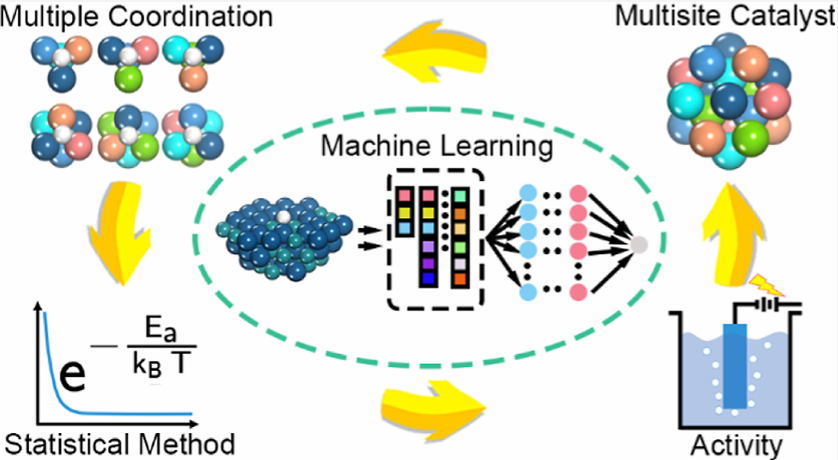Two research teams led by Prof. SONG Li and WU Xiaojun from the National Synchrotron Radiation Laboratory at the University of Science and Technology of China (USTC) of the Chinese Academy of Sciences (CAS), have developed a novel theoretical model to describe the overall activity of multisite alloy catalysts. They proposed a concept of equivalent site ratio and successfully quantified the contributions of various active sites in Pt-Ru disordered solid solution (DSS) alloys. Their work was published in Journal of the American Chemical Society.
DSS alloys possess numerous catalytic sites, making them suitable for catalyzing various important chemical reactions. However, accurately evaluating their activity localization structure and overall activity require extensive computational resources and make direct analysis of the results challenging. Therefore, developing an efficient and accurate computational method to describe the overall activity of multi-site alloy catalysts is crucial for the optimization of alloy components proportion.
To address the issue, the research team employed high-throughput computational methods based on density functional theory (DFT) and machine learning to obtain extensive hydrogen adsorption free energy data at various random sites in Pt-Ru DSS alloy. Based on radial distribution and site energy distribution, the team established the relationship between the microstructure of active sites and their intrinsic activity, identifying Pt3|Ru1 and Pt3|Ru3 as the most active sites for hydrogen evolution reaction (HER).
Thereafter, the team innovatively introduced the concept of the equivalent site proportion, uncovering the quantitative relationship between the number of active sites, intrinsic activity, and the overall activity of catalyst. Their prediction suggests that the equivalent site proportion peaks at relatively low Ru concentrations, with a significant increase in Pt3|Ru1 and Pt3|Ru3 sites when the Ru content is between 20% and 30%. Subsequent experiments showed high consistency with the model prediction, validating the proposed statistical methods and the concept of the equivalent site proportion.

Machine learning and statistical analysis guide high-throughput screening and design of catalysts. (Image from Prof SONG’s and Prof WU’s teams)
Previously, the team successfully applied statistical analysis to identify and screen multi-element two-dimensional layered materials for sulfur reduction reaction (SRR) catalysts. They identified 30 high-performance candidates, with a screening accuracy exceeding 93% based on Gibbs free energy calculations for SRR, providing a critical foundation for their current research on DSS alloys.
This study provides critical insights into the multi-component effects, multisite interactions, and reaction pathways of electrocatalysts. Their statistical methods and machine learning models lay valuable foundations for high-throughput screening, functional modulation of catalysts, paving the way for the development of more efficient and targeted catalysts.
Paper link: https://pubs.acs.org/doi/10.1021/jacs.4c01542
(Written by WU Yuyang, Edited by ZHANG Yihang, USTC News Center)